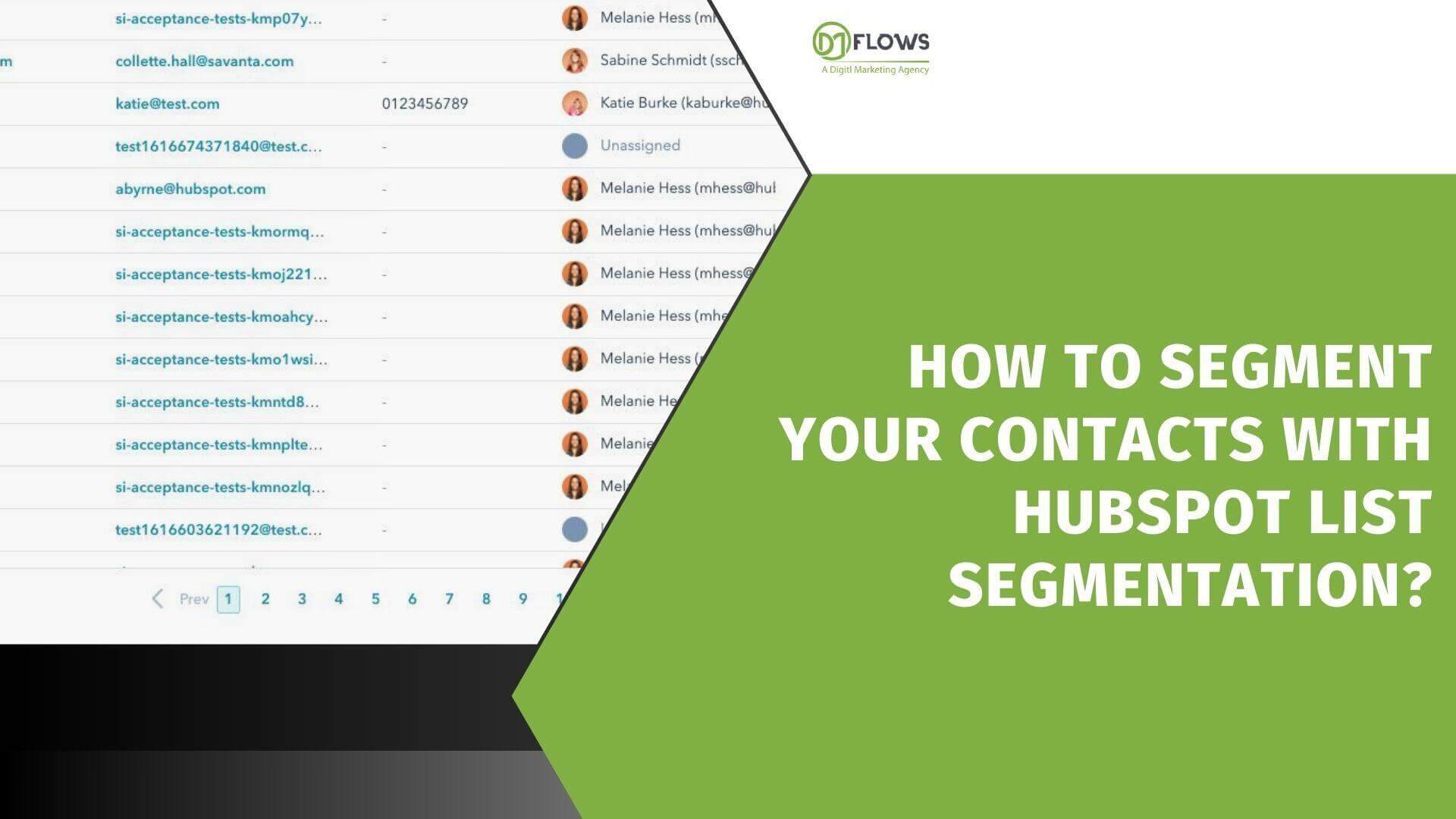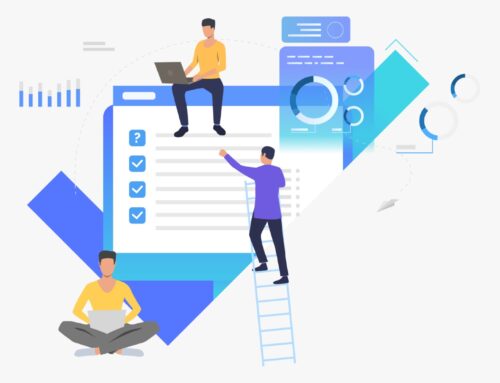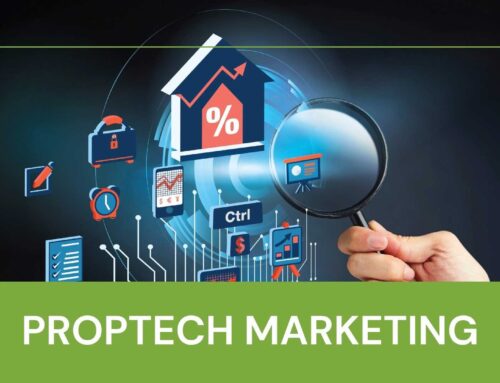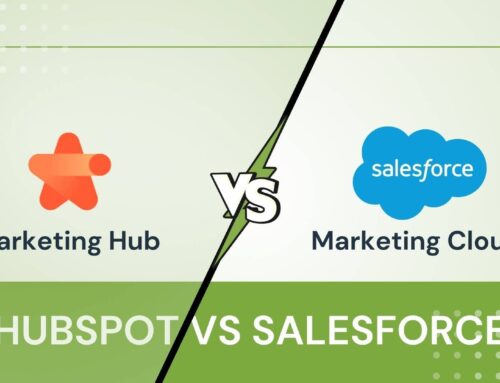HubSpot List Segmentation
HubSpot List Segmentation allows you to categorize your contacts into focused groups based on various criteria. By segmenting your audience, you can craft highly personalized marketing campaigns that resonate with each segment, ultimately driving better engagement and conversions.
Types of HubSpot List Segmentation?
HubSpot offers a variety of criteria you can use to segment your contacts, allowing for very granular control over your marketing efforts. Here are some common types of HubSpot list segmentation:
Basic Segmentation
Customer vs. Prospect: Segmenting by purchase history allows you to target existing customers with upsell or loyalty campaigns, and tailor messaging to prospects who haven’t bought yet.
Demographic Segmentation
Location: Target campaigns based on geographic location, which can be useful for businesses with regional offerings or promotions.
Buyer Persona Segmentation
Personas: Segment by buyer personas, which are profiles representing your ideal customers with distinct characteristics and needs. This allows for highly targeted messaging based on their pain points and interests.
Engagement Segmentation
- Funnel Stage: Segment by where contacts are in the buyer’s journey (awareness, consideration, decision). This lets you send targeted content that addresses their specific needs at each stage.
- Email Engagement: Segment by how contacts interact with your emails (open rates, click-through rates). This helps identify highly engaged contacts for special offers or nurture those who haven’t opened recent emails.
Behavioral Segmentation
- Website Activity: Segment by website behavior, such as pages visited or downloads made. This allows you to target contacts who have shown interest in specific products or services.
- Cart Abandoners: Segment those who abandon their shopping carts before checkout. You can then send targeted emails reminding them about their abandoned items or offering incentives to complete the purchase.
This is not an exhaustive list, and HubSpot allows for more complex segmentation by combining multiple criteria.

Getting Started with HubSpot List Segmentation
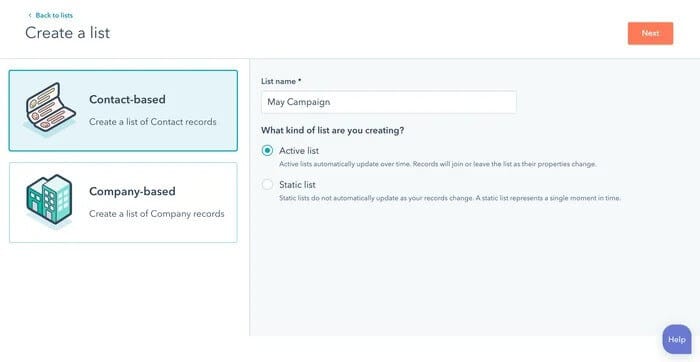
HubSpot List Segmentation is a powerful tool to target your marketing efforts and personalize your outreach. Here’s how to leverage it effectively:
Benefits of Segmentation
- Increased Engagement: People are more likely to open and interact with emails that are relevant to their interests.
- Improved Conversion Rates: Targeted campaigns resonate better, leading to more website conversions and sales.
- Enhanced Customer Relationships: Segmentation allows you to tailor your messaging to each audience segment, fostering stronger connections.
Using Lists for Targeted Campaigns
- Create Targeted Email Campaigns: Segment your lists to send highly relevant email blasts or nurture sequences.
- Personalize Landing Pages and Website Content: Tailor your website content to different audience segments based on their needs.
- Automate Workflows: HubSpot allows you to trigger workflows based on list membership, automating tasks like sending emails or assigning contacts to sales reps.
Here are some common HubSpot segmentation criteria,
- Demographics: Segment by factors like age, location, or job title to personalize your message.
- Firmographics: Company size, industry, revenue, etc.
- Lifecycle Stage: Segment by where contacts are in the buyer’s journey (awareness, consideration, decision) to deliver relevant content at each stage.
- Behavior: Use website activity, email engagement, or content downloads to target contacts based on their interests.
- List Membership: Existing segments you’ve created
Combine Filters
HubSpot’s powerful segmentation engine allows you to combine multiple filters using AND/OR operators for highly precise targeting.
Save and Use Your List
Once you’ve defined your criteria, give your list a descriptive name and save it. This list can now be used to target specific email campaigns, workflows, and other marketing initiatives.
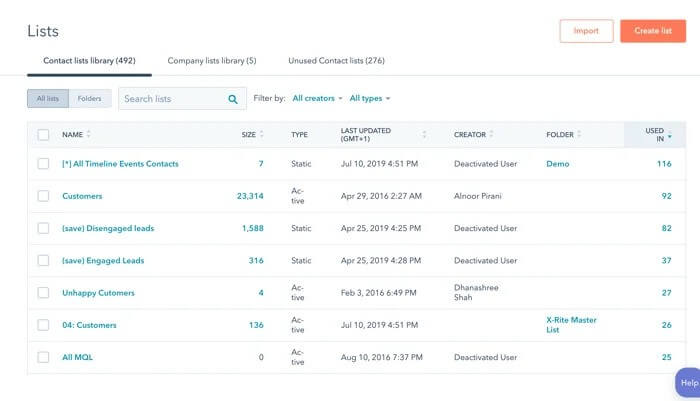
Segmentation Strategies for Success
Now that you know the mechanics, let’s explore some effective segmentation strategies:
Buyer Persona Segmentation
Segment your contacts based on your ideal customer profiles (buyer personas). This ensures your messaging aligns with their specific needs and pain points.
Life Cycle Stage Segmentation
Target contacts at different stages of the buyer’s journey with relevant content. For example, nurture leads in the awareness stage with informative blog posts, while offering product demos to those in the decision stage.
Engagement Level Segmentation
Segment contacts based on their engagement with your emails, website, or social media. Re-engage inactive contacts with enticing offers, while rewarding highly engaged contacts with exclusive content or discounts.
Behavior-Based Segmentation
Leverage website behavior data to segment contacts. Target those who visited specific product pages with relevant promotions or send follow-up emails to cart abandoners.
Pro Tips for Powerful Segmentation
- Start Simple: Don’t overwhelm yourself with overly complex segments initially. Begin with a few basic segments and gradually refine your strategy.
- Focus on Actionable Data: Segment based on data that drives marketing actions, such as website behavior or email engagement.
- Test and Refine: Segmentation is an ongoing process. Experiment with different segments and track their performance to identify what resonates most with your audience.
- Maintain Data Quality: Ensure your contact data is accurate and up-to-date for effective segmentation. Regularly cleanse your lists to remove inactive contacts.
By leveraging HubSpot List Segmentation effectively, you can transform your marketing efforts from one-size-fits-all to highly personalized experiences. This, in turn, will lead to increased engagement, conversions, and overall marketing ROI.

